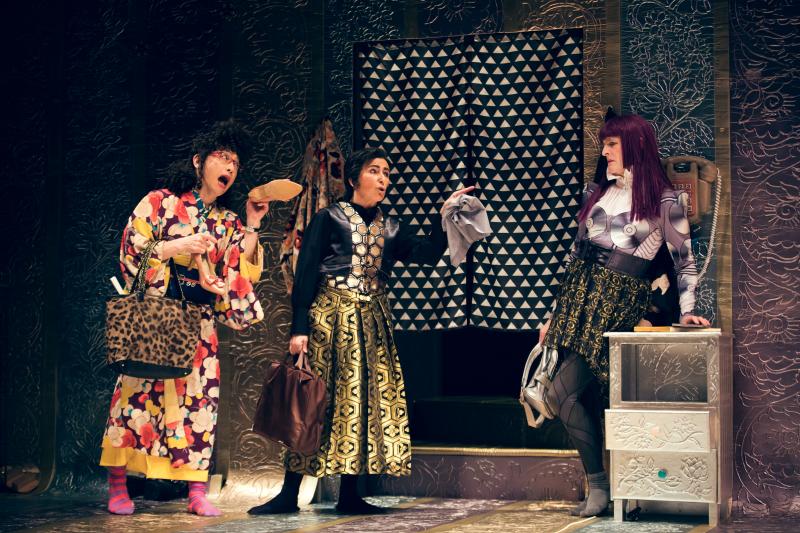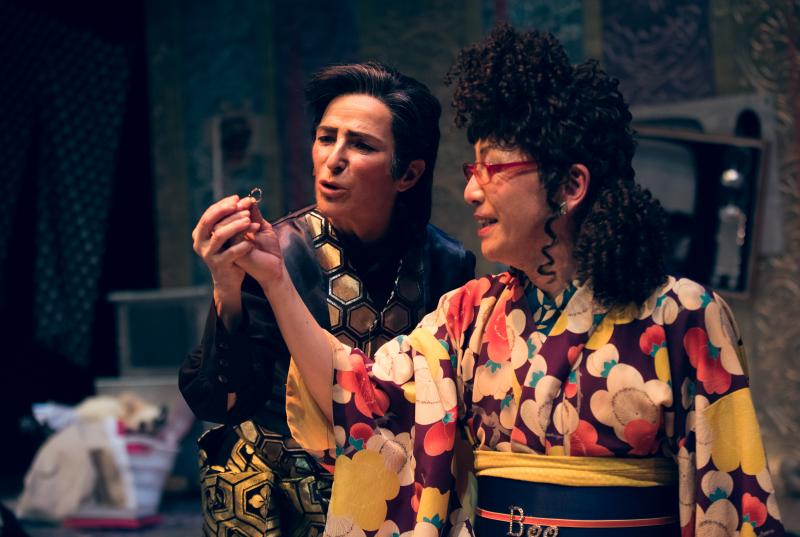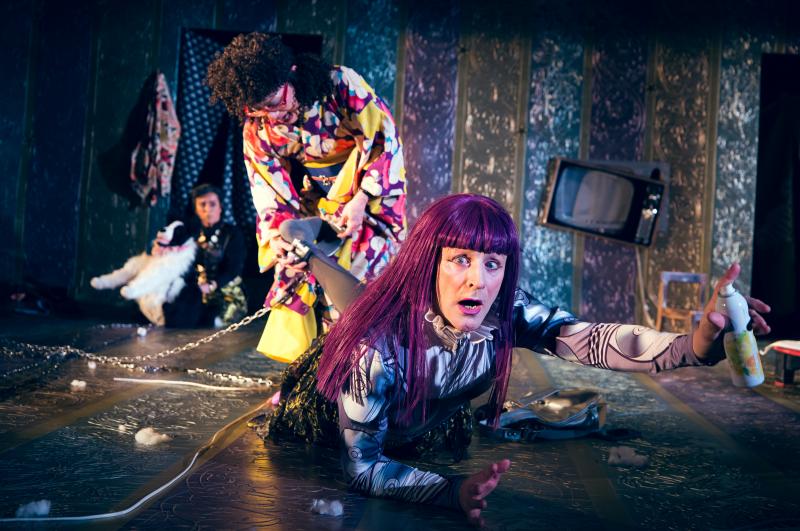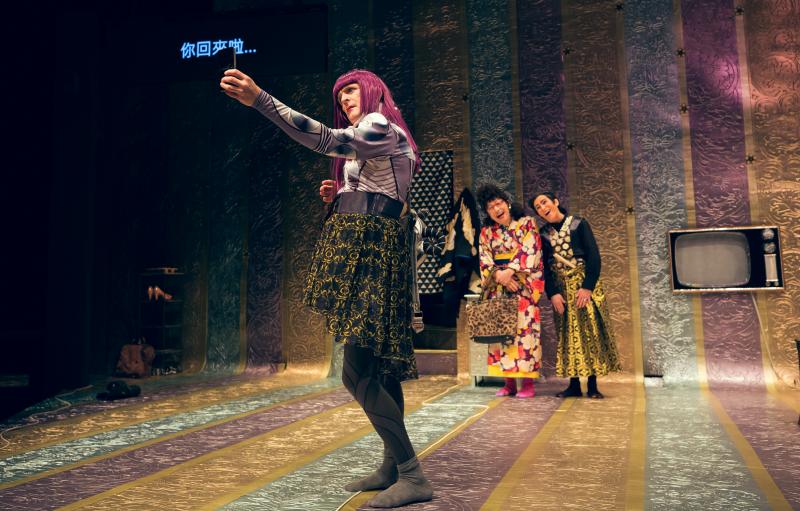Interview: Legendary Japanese Theatre Artist Hideki Noda on ONE GREEN BOTTLE at La MaMa ETC
.jpg)
Japanese theatre-maker and performer Hideki Noda has been a significant force in Japanese contemporary theatre since he burst onto the scene as part of the third generation of the underground (angura) theatre movement in the mid-1970s when he formed the company Yume no Yuminsha. Noda took a sharp turn in the '90s thanks to the influence of a year abroad in London. Since then, he has been creating new works with his company NODA MAP and has added the roles of professor at Tada University and Artistic Director of Tokyo Metropolitan Theatre to his resume. His powerfully dynamic, physically demanding, utterly engaging and thoroughly entertaining works have been seen across the world's stage, and now he returns to one of the most significant homes of the underground theatre movement in NYC -- The Ellen Stewart Theater at La MaMa -- in One Green Bottle, playing from February 29-March 8th. The three-person gender-swapping show puts an absurdist spin on the current self-driven, self-obsessed "selfie" society. A family (Lilo Baur as Bo, the father and master of the classical stage; Glyn Pritchard as Pickle, the teenage, technology-obsessed daughter; and Noda himself as Boo, the obedient "wifu" and mother with a penchant for idol group boy bands) battles for who will stay in and watch their pregnant pooch Princess when all three have made plans for the evening. This simple setup paves the way for outrageous extremes. Nothing is sacred, and every delectable dig at Japanese and Western society is served with relish, extraordinarily clever dialogue, audacious antics and astounding comedic physicality. A live musician (Genichiro Tanaka) creates a dramatic atmosphere through traditional Japanese music and Kabuki soundscapes.

One Green Bottle is unmissable, uproariously hysterical and absolutely delightful, with depth that lingers long after the last "one green bottle should accidentally fall..." as the song goes. I got the pleasure to experience the process behind the scenes as the actors warmed up and rehearsed, minus their outlandish makeup and garments. There was diplomacy on stage as the three actors negotiated the intense physicality, quick and quippy dialogue and all of the props (some of which smoke) and cues together with deep respect teamed with a sense of play. Even though one was the director and playwright, all were equals under those bright lights, and the sense of camaraderie was palpable. I also got the rare opportunity to interview Noda about his theatrical journey, what it's like to simultaneously wear multiple hats as a writer/director and performer, the role that gender plays in modern and historic productions, and where he sees the future of Japanese contemporary theatre is going.
You were a formative voice in the second and third waves of the rebellious, non-traditional theatre movement generally known as angura (underground) theatre that began in the '60s and continued into the '70s and '80s under the genre title shōgekijō theatre or "little theatre" movement. For the uninitiated, can you briefly describe this style and its significance to Japanese theatre?
In the 19th century, Japan opened to Western culture -- in 1868. After that, we were influenced by Western culture in the theatre as well. Perhaps we'd been influenced by Western style too much. The underground generation tried to run away from that. For instance, I've been influenced by Juro Kara, the playwright and director who's from the same generation as Shuji Terayama (Japanese avant-garde poet, dramatist, writer, film director, and photographer). They tried to run away from the Westernized theatre to the outside but wanted to follow the Kabuki style, so they built tents to perform their theatre. It was strange because they tried to return and jump to the past. I liked that underground style. They used to be considered the younger generation, which is rebellious and radical. Still, I liked Kara and Terayama -- they were fantastic -- they had such energy.
You founded your company Yume no Yuminsha (Dreaming Bohemian) in the 1970s when you were a law student, then you disbanded it in 1992, went to study in London, returned to Japan a year later and formed your current theatre production company NODA MAP. What inspired such a radical shift and new vision in London during that period?
I met the Theatre de Complicité, a very physical theatre group in London, and had been in a workshop with Complicité for one year; then, it led to a production -- Three Lives of Lucie Cabrol. I felt it was the same 'cup of tea' because it was very physical with lyricism. Then I suddenly realized that in my 20s, I had been taught the Lecoq style (Jacques Lecoq, 1921-1999, was a French stage actor and coach) by a Japanese director, and theatre Complicité also came from the Lecoq style. So it really is my 'cup of tea.

Butoh theatre tends to be very physical. Is it anything like that?
Butoh also came from the angura theatre movement (in the 1960s) and is very physical.
In this particular piece -- One Green Bottle -- you're also in it (as a performer). Sometimes you are a writer/director only, and sometimes you're also in the production. How does your experience differ when you are the playwright and director only versus when you are also acting in the play?
Writing is different because I am alone, and nobody is with me when I finish. But the director and actor's job is to communicate and cooperate. When I do both roles (director/actor), I can see what the directors can't see from the stage and vice versa. So sometimes, when I am on the stage, I suddenly come up with an idea as a director from the other side's point of view.
So it's not a hindrance. Do you actually feel like you're more involved when you're there with them?
Yes, but to the actors, it's a bit rude (laughs) because sometimes I look at them as a director while we are performing together.

I wanted to bring up what role gender plays in Japanese theater in general and One Green Bottle because it's a gender-bending piece. You and another male actor play a female character, and a female actress plays the male role, and there is a lot of that in Japanese theatre historically. Kabuki theatre (which began in the 17th century and is still performed today), for example, was created by a woman but for centuries has been performed solely by men who also play female roles, and in Takarazuka Revue (established in 1914), the all-female company plays male roles to much acclaim. What do you feel about gender in theatre and Japanese society on and off stage?
In my history, when I was 20, I played a female role for the first time, and it was a huge hit (laughs). So then I continued that type of acting because I can be more relaxed when playing a female role because I can see my acting from a bit of a distance. It's quite the core of acting because it is so different. Of course, I knew of this in Kabuki and Takarazuka, so it's not unusual in Japan. But in those days when I first performed a female role, the audience was still a bit shocked. At that time, only Kabuki or Takarazuka was OK, but for contemporary theatre, it was not (laughs).
That's sort of hypocritical because they can do it as long as it's traditional or they are wearing pretty outfits, but not for the others. Do you think it's still viewed as shocking today?
No, it's more accepted now. For example, with One Green Bottle, we have swapped the genders, and through that, we can get the filters, meaning that through this filter, a male can see a real male by portraying a female.
So different truths are revealed when you step into the others' bodies?
Yes. So, for instance, a male actor (playing a female character) is saying to a female actor (playing a male) -- "You are a misogynist'' (laughs). So the audience starts to think through that filter, and the word 'misogynist' has a different meaning. That filter is very important.

Speaking of filters, the 'selfie society' and technology plays a big role in One Green Bottle, and they're also rather selfish characters, driven by their own desires. How do you think modern technology has brought us closer together as it was meant to and also driven us farther apart? What role does technology play in this piece?
I don't want to condemn modern technology as a person from the older generation, but when you go to Japan in the metro station, you see everybody isolated (with their little box), and they believe that they can communicate with the world through the device. But actually, the device is always showing only what you're interested in, which means it's a narrow filter, your own world, and it's a bit suspicious.
One more question about the future of theatre. You are currently both the Artistic Director of the Tokyo Metropolitan Theatre and a professor at Tama Art University, so you are deeply immersed not only in your own work but the work of your peers and contemporaries as well as the next generation of theatre creators. What do you think about the future of Japanese theatre?
Well, yes I am a professor and artistic director, but usually, I don't see myself in the mirror so I didn't realize I am getting older and older. One day I suddenly said, "Oh! I'm old!" (laughs). So I wanted to be sure that the younger generations of theatre people don't hit a plateau but keep climbing and learning. I wish that they would be more interested in physical things, but their ideas give me lots of inspiration because maybe they are linked to the new technology, and their ideas come from where they live. I give as much as possible, and I have, but I also want to get as much as I can from them. Maybe I'm greedy (laughs)
Would you say the younger generation of theatre makers and your students have inspired One Green Bottle?
Yes, but they don't see our play because they only think of their small things (through their devices). That's a problem. But I know many from the younger generation who are fantastic, and they have started to go abroad to perform. I want to support that and help them as much as possible.
So their world gets expanded because it has to. Your work has been abroad, and you've had the opportunity to work with actors who are Thai, Korean, and English, so that's exciting and gives another opportunity for multiple levels of cultural exchange with different types of people and ages, too, so the work continues on many levels.
One Green Bottle plays at The Ellen Stewart Theatre at La Mama, located at 66 East 4th Street (between Bowery & 2nd Ave) New York, NY 10003, through March 8, 2020. For tickets and more information, please visit: http://lamama.org/one-green-bottle/
Comments

Videos

